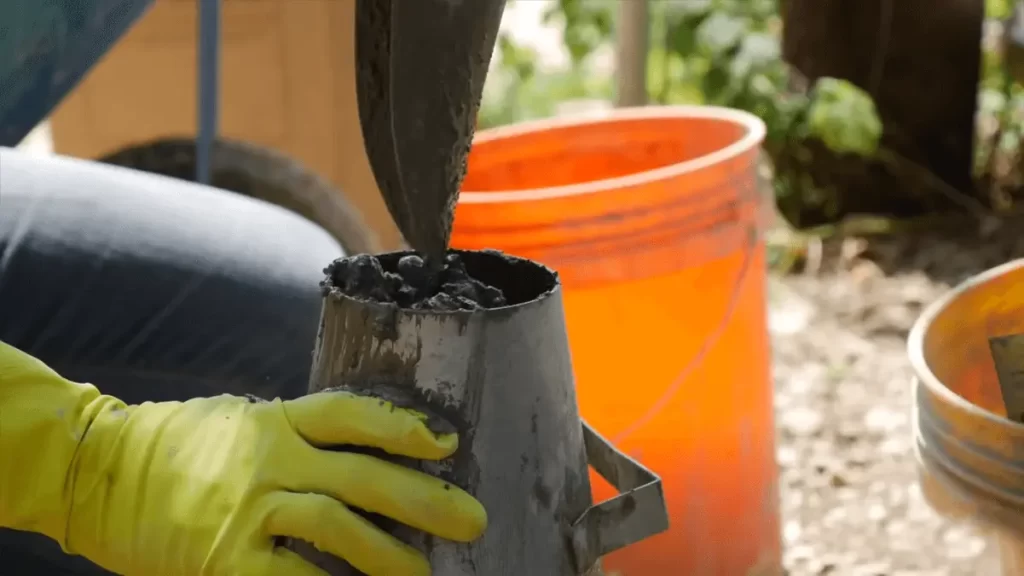What Is Concrete Testing in Construction?


What Is Concrete Testing in Construction?
Concrete serves as the wrench of any construction and creates strength and durability for the skeleton of buildings, bridges, roads and other structures. However, how do engineers and contractors verify that the concrete satisfy the safety and quality measures? This is where concrete testing in construction comes to the picture. Concrete testing comprises of a set of formulated procedures for determining the quality, strength and durability of concrete. Through a number of tests, engineers are able to determine whether the concrete mix is appropriate for the application to be undertaken, thereby reducing risks and strengthening structures.
It will be no exaggeration to say that the importance of concrete testing in construction is paramount, because structures can last longer and are much safer which incorporates practical measures to protect the public. Construction professionals are able to pinpoint specific vulnerabilities to a building or structure so that necessary adjustments can be implemented in order to minimize expensive repair costs or ridiculously preventable damage.
The Importance of Concrete Testing in Construction
The necessity of high-quality concrete stems from the need to prevent structural failures, reduce maintenance costs, and extend the lifespan of concrete buildings. Moreover, construction concrete testing and evaluation is important to ensure that the concrete mix design is as per the set quality standards, and that it fulfills the intended purpose. If no proper examination is undertaken, the reliability of the structure can become prone to risk and lead to serious danger and loss of money. Testing concrete in construction projects also ensures safety compliance.
Most construction projects need to satisfy specific safety measures and building codes. Concrete testing ensures compliance, which minimizes the probability of weak or defective structures. Moreover, it assists in checking the durability and strength of the concrete, making sure that it is capable of enduring the impacts of variable environmental conditions, ranging from extreme weather, chemical exposure, to heavy loads. Proper testing guarantees not only the safety of the structures, but leads to reduced costs of maintenance and repairs in the long term.
Categories of Concrete Testing in Construction
Concrete testing in construction is divided into fresh concrete testing and hardened concrete testing. Fresh concrete testing is done before the concrete has set and is necessary to ensure that the concrete is workable and uniform. One example of a fresh concrete test is the slump test, which determines the flowability of the concrete. This test involves filling a circular, hollow cone with concrete, then lifting the cone so that the concrete can slouch under its own weight. The height at which the concrete slumps indicate its workability.
A very large slump indicates that there is some excessive water, which is detrimental to the structure. Another important test for fresh concrete is the air content test, which measures the volume of air within the concrete mixture. Having the proper air content is especially important in high freeze-thaw cycle areas in order to minimize cracking and maximally improve longevity. There are also temperature tests conducted to determine whether or not the concrete is at an appropriate temperature for hydration and strength development. There are problematic ranges if the concrete is too hot, or too cold, it will not cure properly leading to weakened structures. In the case of hardened concrete, testing is performed after the concrete has set and cured. The most common hardened concrete test is the compressive strength test, which assesses the strength of the concrete in terms of the load it can bear.
In this test, cylindrical or cube-shaped concrete samples are subjected to compaction, wherein they are placed under a compression machine and crushed in order to quantify their strength. The flexural strength test is another important test which focuses on bending resistance as a measure of performance, especially for beams and pavements. Other tests such as the permeability test determine the ease with which water and other chemicals can pass through the concrete, allowing for an estimation of the concrete’s resistance to moisture and corrosion. The rebound hammer test is a non-destructive test, which determined the concrete’s surface hardness and subsequently the concrete’s strength.
Guidelines for Testing Concrete in Construction
For accuracy and reliability, construction concrete testing needs to observe strict industry standards. There are guidelines issued by AWS, in other parts of the world, that regulate the different procedures of testing. Among the constituents of concrete is cement which has been used since ancient times, and the basis of its utilization was known long ago, ASTM International is the most reputable institute that is known all over the world as an authority that concrete testing is conducted as per international standards.
The British Standards European Norms BS EN is well-known testing concrete standard in Europe. The American Concrete Institute “ACI” is another important institution which offers practices and methods for the construction of the test concrete. In other countries such as India, the Bureau of Indian Standards IS controls the testing of concrete so that appropriate structure regulations are not breached. Standards assists the achievement of constructive uniformity, imperative for all construction scenarios in projects to guarantee that each tested concrete satisfies the needed parameters for strength, durability and safety.
Common Issues Found in Concrete Testing
The quality of concrete in construction operations could be affected by very many problems, even when thorough testing has been performed. One of the most frequent problems is low compressive strength, which can arise from too much water in the mix, insufficient curing, or not using appropriate quality materials. In case the compressive strength level is lower than anticipated, the stiffness of the structure is critically reduced, and it will not be safe for use. Huge quantity of air is another problem that can decrease the strength of concrete and render it incapable of carrying any additional load. Excess air in the mix causes the formation of voids which may make it easy for the structure to crack when subjected to loading. Cracking is a major concern in concrete construction and may arise from shrinkage, environmental conditions, and even the proportions of the mixture. When cracks develop in concrete, moisture can penetrate through them, rusting the reinforcing steel which eventually leads to failure of the structure.
Also Read: How to use GIS for Construction?
Another usual problem is low workability, which negatively impacts the placement and finishing activities of the concrete work. If either of the two extremes, that is, too dry or too wet concrete, is used, there would be failure in achieving the desired compaction, and this ultimately results in the structure being weak. These problems could be avoided through rigor testing and inspection of the concrete in its works so that any difficulties that may arise from this may be taken care of before it becomes critical. These challenges can be reduced by adopting reasonable mix design changes, curing methods, and conforming to the specified quantitative limits and quality control practices.
Conclusion
As it relates to construction activities, testing concrete in construction for strength, durability, and safety is of utmost importance. Engineers verify that the concrete mix is compliant with the required criteria by carrying out fresh and hardened concrete tests, and is thus deemed to be of satisfactory quality. Not having a defined procedure for testing poses monumental risk on construction projects in the form of undesired structural collapse; unplanned excessive expenditure on upkeep, and unsafe working conditions.

